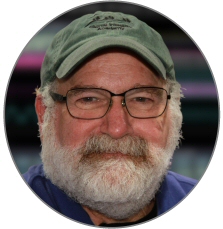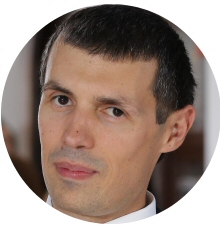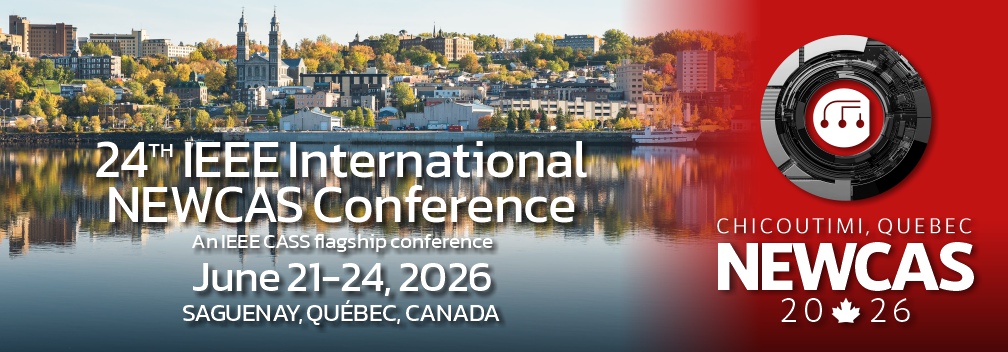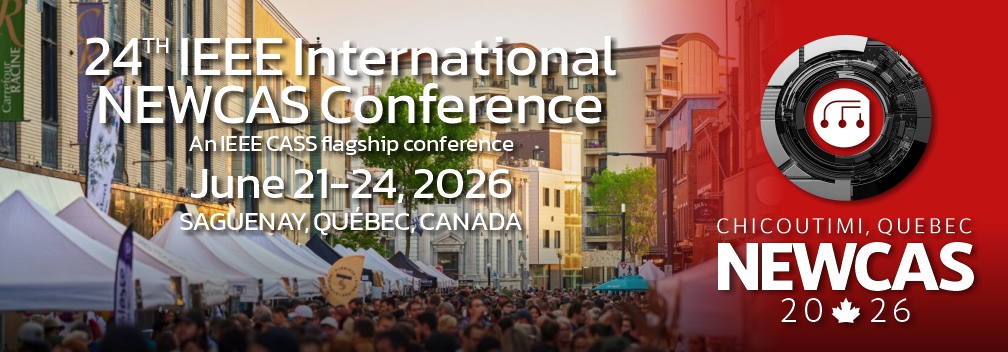Keynotes
Open source circuit boards to understand SI, PI and EMI
by Éric Bogatin, University of Colorado Boulder, USA
Closing the Generative AI-IC Design Loop: from Tokens to Transistors and Back
by Vladimir Milovanović, University of Kragujevac, Serbia
 Open source circuit boards to understand SI, PI and EMI
Open source circuit boards to understand SI, PI and EMI
Éric Bogatin, University of Colorado Boulder, USA
— Abstract — We are all lifelong learners. The only difference between school and work is the relative balance between learning and doing, and the direction the money flows. If we do not continually learn, our skills will become obsolete in a few years. We learn by studying books, lectures, and videos, but we understand by doing. This includes solving problems, performing simulations, and conducting hands-on measurements. Our group at CU Boulder has developed a series of low-cost, open-source circuit boards used in our PCB design and signal integrity courses to provide undergraduates and graduate students with hands-on experience in understanding how physical design influences noise in circuits. The first series of boards will be released in December 2025. Some of the design principles these boards demonstrate will be presented in this talk.
— Biography — Prof Eric Bogatin received his BS in physics from MIT and PhD in physics from the University of Arizona, Tucson. After working in industry for 30 years at Bell Labs, Raychem, and Sun Microsystems, he started his own company, which was acquired by Teledyne in 2012. He transitioned to teaching full-time and is currently on the faculty at CU Boulder, where he teaches signal integrity to graduate students and systems engineering in the senior design capstone program. He is a Fellow with Teledyne and the technical editor of the Signal Integrity Journal.
 Closing the Generative AI-IC Design Loop: from Tokens to Transistors and Back
Closing the Generative AI-IC Design Loop: from Tokens to Transistors and Back
Vladimir Milovanović, University of Kragujevac, Serbia
— Abstract — Vladimir Milovanović received the Dipl.-Ing. degree in Electrical Engineering from the University of Belgrade, Belgrade, Serbia, in 2005, and the Ph.D. degree from Delft University of Technology, Delft, the Netherlands, in 2010. Since the beginning of 2014, he has been working as a postdoctoral scholar with the University of California, Berkeley. Before joining Berkeley Wireless Research Center, from 2011 he was with Vienna University of Technology, Vienna, Austria, as a postdoctoral research fellow. Currently, he is a professor with the Department of Electrical Engineering and Computer Sciences at the Faculty of Engineering, University of Kragujevac, Serbia, where he also serves as managing director of the Center for Integrated Systems. Dr. Milovanović has held advisory, consulting, or visiting positions with Texas Instruments, NXP Semiconductors, Infineon Technologies, Sony, and Broadcom. He is the founder and the CTO of a start-up company. His research focuses and interests include design, modeling, and optimization of analog, mixed-signal, and digital integrated circuits and systems, along with the development and implementation of efficient artificial intelligence and signal processing algorithms. Prof. Milovanović is the recipient of the Best Student Paper Award at the 2009 IEEE Bipolar/BiCMOS Circuits and Technology Meeting and the Best Paper Awards at the 2014 IEEE International Conference on Microelectronics.
— Biography — Generative artificial intelligence (AI) has already reshaped software development, yet its impact on integrated circuit (IC) design flows remains modest. Meanwhile, chips, particularly GPUs, are the primary workforce behind LLM-based chatbots, but the demand for more computational power, and especially more efficient computation, is growing rapidly. This keynote explores the bidirectional frontier between AI and ICs. On one side it is advocating a shift towards the so-called AI-friendly circuits, i.e., favoring digitally intensive and, where feasible, even fully synthesizable implementations of traditionally analog functions. Such architectures expose regular, learnable structures, machine-checkable specifications, and richer, more easily curated design corpora that LLMs can interpret, reason about, verify, optimize, and digest more reliably than conventional schematic-and-layout workflow entries. In the reverse direction, the talk will examine compute and energy bottlenecks of transformer models, promoting the near-term solutions with dedicated “tokens-in/tokens-out” accelerators that collapse the transformer pipelines into streaming datapaths with tight memory locality, improving energy efficiency, latency, and scalability. In conclusion, foresight on mutual AI-IC and IC-AI interplay will be given: AI accelerates design closures, reducing the NRE cost, whereas purpose-built hard-wired custom silicon hopefully sustains the next orders of magnitude in model capability on the road toward reaching the AGI goal.


